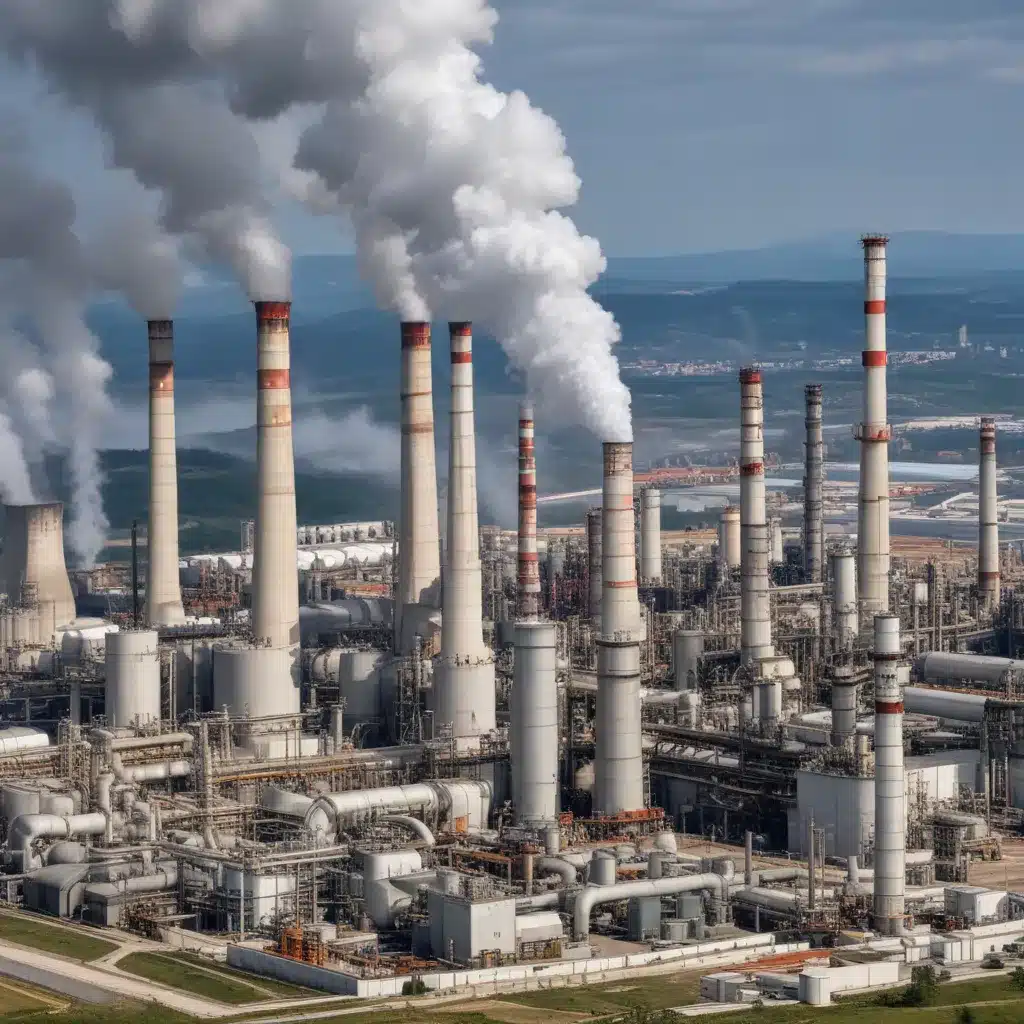
The shift to a more sustainable future demands that we address the considerable emissions from heavy industry—a sector responsible for over a quarter of global CO2 outputs. As Europe accelerates its decarbonization efforts, the role of carbon capture and storage (CCS) technologies is gaining increasing prominence. These innovative solutions offer a promising pathway to mitigate the environmental impact of industrial processes that are difficult to decarbonize through other means.
The Environmental Impact of Heavy Industry
Heavy industries such as cement, steel, and chemicals production are the backbone of modern civilization, providing the fundamental materials that enable infrastructure development, transportation, and economic growth. However, the energy-intensive nature of these processes also makes them major contributors to global greenhouse gas emissions. Cement production alone accounts for around 8% of worldwide CO2 output, with the industry sector as a whole responsible for over 20% of all emissions.
Tackling these industrial emissions is crucial if Europe is to achieve its ambitious climate goals. Without effective solutions, heavy industry could become the single largest source of domestic emissions within the next decade, undermining efforts to transition to a net-zero economy.
The Need for Sustainable Solutions
Conventional methods of reducing industrial emissions, such as increased energy efficiency and fuel switching, have had limited impact. The inherent chemical reactions involved in many industrial processes result in “process emissions” that cannot be easily eliminated. This is where CCS technologies emerge as a vital complement to other decarbonization strategies.
Carbon Capture and Storage Technologies
Carbon capture and storage refers to the process of intercepting CO2 emissions at the source, compressing the gas, and then transporting it to be permanently stored underground or utilized in various applications. This multi-step approach offers a way to mitigate the environmental impact of industrial activities that are otherwise difficult to decarbonize.
Understanding the Basics of Carbon Capture and Storage
The three main components of a CCS system are:
Capture: CO2 is separated from the exhaust gases of industrial facilities, power plants, or other emission sources through techniques such as chemical absorption, physical separation, or membrane filtration.
Transport: The captured CO2 is compressed and transported, typically via pipelines, to a suitable storage or utilization site.
Storage/Utilization: The CO2 is either permanently stored in deep geological formations, such as depleted oil and gas reservoirs or saline aquifers, or utilized in the production of various products, such as building materials or synthetic fuels.
Applications of Carbon Capture and Storage
CCS technologies have the potential to address emissions from a wide range of industrial sectors, including cement, steel, chemicals, and refining. By capturing the CO2 before it is released into the atmosphere, these solutions can play a critical role in decarbonizing processes that lack alternative emissions reduction options.
Furthermore, CCS can enable the production of low-emission hydrogen, a key energy carrier for the transition to a sustainable future. By capturing the CO2 generated during hydrogen production from fossil fuels, CCS can provide a pathway to “blue hydrogen” that can complement the development of “green hydrogen” from renewable energy sources.
Challenges and Limitations
While CCS holds significant promise, it also faces several challenges. The high upfront costs and energy requirements of capture and storage processes have historically hindered widespread adoption. Additionally, the development of the necessary infrastructure, such as CO2 transport networks and secure storage sites, requires extensive planning and coordination among various stakeholders.
Concerns have also been raised about the potential environmental and social impacts of CCS, particularly regarding the siting of storage facilities and the risk of CO2 leakage. Addressing these concerns through robust regulatory frameworks and transparent community engagement will be crucial to ensuring the responsible deployment of CCS technologies.
The Role of Carbon Capture and Storage in Decarbonization
Potential for Emissions Reduction
According to the International Energy Agency (IEA), CCS has the potential to capture around 1 gigaton of CO2 per year by 2030 and up to 5 gigatons per year by 2050 – a significant contribution towards global climate goals. In Europe, the deployment of CCS is expected to play a pivotal role in achieving the continent’s ambitious net-zero emissions target by 2050.
Integration with Renewable Energy
CCS can also complement the growth of renewable energy sources, such as wind and solar, by providing a means to decarbonize industrial processes that cannot be easily electrified. This synergistic approach can help create a more balanced and resilient energy system, with CCS supporting the integration of intermittent renewable generation.
Economic Considerations
While the upfront costs of CCS remain a challenge, policy support and targeted investments are helping to drive down the technology’s price tag. Mechanisms such as carbon pricing, tax credits, and tailored funding schemes are incentivizing the deployment of CCS and making it a more viable option for industrial decarbonization.
The Future of Decarbonization in Heavy Industry
Technological Advancements
Continuous innovation in CCS technologies is expected to improve efficiency, reduce costs, and expand the range of applications. Advances in areas like direct air capture, carbon utilization, and hydrogen production with CCS hold the potential to unlock new pathways for industrial decarbonization.
Policy and Regulatory Frameworks
Comprehensive policy frameworks and robust regulatory environments will be crucial to accelerating the adoption of CCS technologies. Initiatives like the European Union’s Taxonomy Regulation and the U.S. Inflation Reduction Act are already providing targeted support and incentives for CCS deployment.
Collaboration and Innovation
Decarbonizing heavy industry will require a collective effort involving government, industry, and research institutions. Public-private partnerships, cross-sectoral collaboration, and international cooperation will be essential to driving technological innovation, sharing best practices, and overcoming the logistical and financial barriers that have historically hindered the widespread adoption of CCS.
As Europe continues its journey towards a sustainable future, the role of carbon capture and storage technologies in decarbonizing heavy industry will be increasingly pivotal. By leveraging the potential of CCS, the continent can unlock new pathways to emissions reduction, foster economic competitiveness, and pave the way for a cleaner, more resilient industrial landscape.






